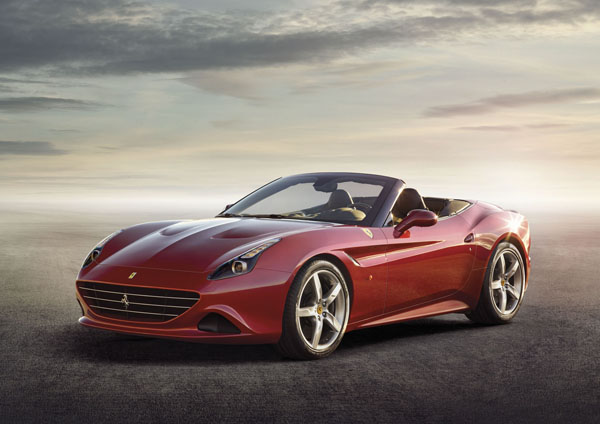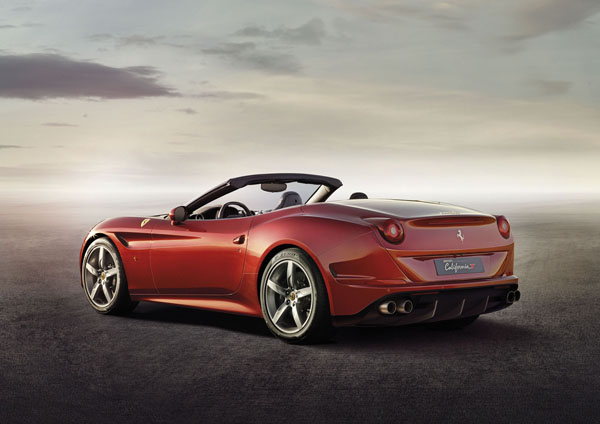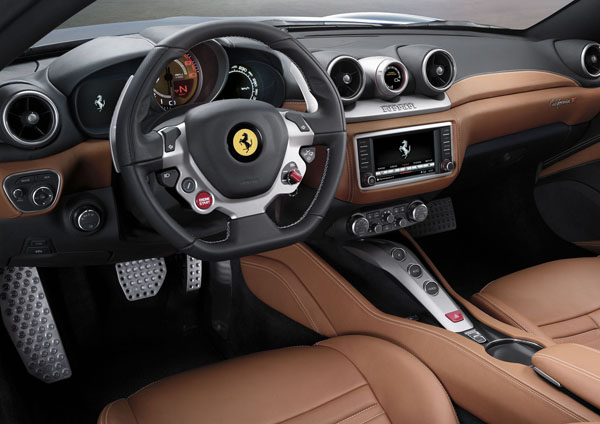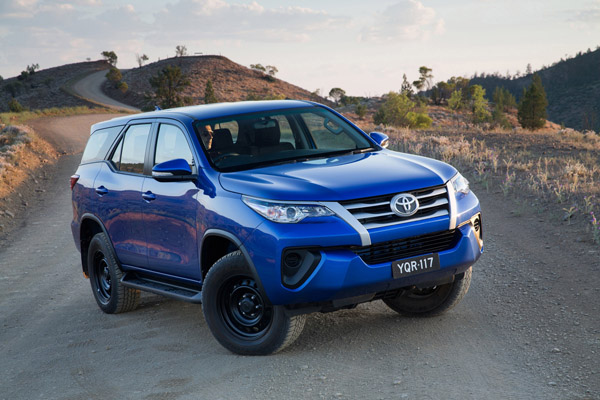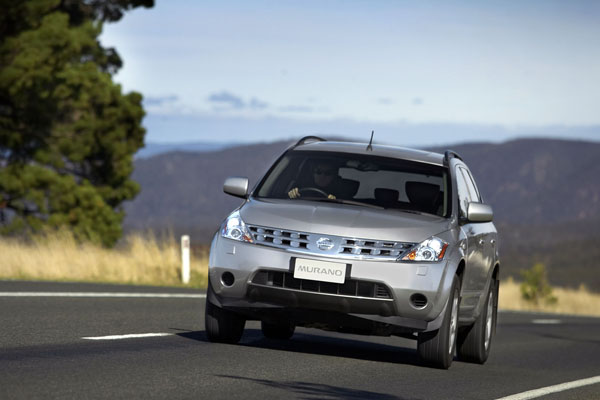Ferrari California T in its latest iteration was launched in Australia over a year ago. So strong was the instantaneous response by well-heeled Aussies that all were sold out. Now we’ve finally been able to get into one for a road test.
STYLING
Penned by the Ferrari Styling Centre in conjunction with Pininfarina, the California T is a sensational Italian supercar. The front has the narrow lighting housings that are a feature of the latest Ferrari range. These work extremely well on the long bonnet of this front-engined machine. The twin air extractors on the bonnet are, in our opinion, much neater than the arrangement on the previous California.
Top up or top down – the transition takes just 14 seconds – the new California looks equally good. However, raising or lowering the roof is considerably noisier than we like.
Improved aerodynamics means the drag co-efficient is down to 0.33. This is nothing special when compared to typical road cars, but keep in mind that downforce is vitally important in any machine that will be cruised at speeds of over 300 km/h, so that 0.33 makes sense.
Seating is strictly 2+2, with rear seat comfort restricted to young children or very small adults, and then only for short trips.
Luggage space can be increased by folding the rear seat backs down giving storage access for bulky items such as golf bags or skis.
ENGINE / TRANSMISSION
Ferrari California T is powered by a turbocharged 3.9-litre V8. It produces 412 kW (550 horsepower) at a beautifully high 7500 rpm. Torque peaks at a big 755 Nm at 4750 revs. These numbers encourage keen drivers to keep the tacho needle in its upper range and the engine producing its aural action to perfection. Love it.
Transmission is by a sports tuned seven-speed conventional automatic to the rear wheels. Manual chased are via paddle shifters. However, the paddles are fixed to the steering column rather than turning with the steering wheel. Not our favourite way of doing it – we prefer locking our hands into the quarter-past-nine position on the wheel and having the paddles in line with that.
As in other recent Ferraris there is a complex F1 type steering wheel with multiple functions. These include the Ferrari’s patented ‘manettino dial’ that lets you choose driving modes.
INFOTAINMENT
Satellite navigation is via a 6.5-inch touch screen, or buttons. USB ports are housed in a compartment under the armrest.
Buyers who have outlaid $409,888, plus on-road costs, can be flown to Italy to watch their California T being put together at the factory and check that the million or so custom features are on track. Our California T came to $549,387 after someone in the press department ticked lots of boxes on the big list of options. The biggest single item was a special paint job priced at just over $20,000.
DRIVING
The V8 is in the front, but sits behind the axle so is classified as mid-mounted. The weight distribution is 47 per cent front / 53 per cent rear so balance is excellent and high cornering speeds can be achieved safely and surely.
Furthermore, the engine is 40 mm lower in the chassis than in the superseded Ferrari California to lower the centre of gravity.
California T hits 100 km/h from rest in just 3.6 seconds, gets to 200 km/h takes in just 11.2 seconds and tops out at 316 km/h, preferably on a racetrack, though bold drivers on unrestricted roads in the Northern Territory may care to have a go there.
Engine sound is everything you expect from a Ferrari; the big revs at start up, slightly irregular beat all through the range, a rise in the note in line with the revs coming up to a frantic note as the redline nears. Then there are the spits and burps during the downchanges and the excess of revs to match the lower gear. All of which probably sounds childish to non-driver readers, but the keen guys and gals will know exactly what we are saying!
Ergonomic controls and well positioned instruments, with a large tacho directly in front of the driver make it easy to get the best from this italian supercar.
Handling amply matches the potential of the V8 turbo. The suspension and steering engineers have worked hard to come up with a system that requires less steering wheel activity than previously. There’s reduced body roll and even better control as you approach the car’s limit.
Ride comfort is pretty good for a car in this class, though there were times when road noise becomes somewhat intrusive. The M1 motorway between the Gold Coast and Brisbane is notoriously bad in this respect and didn’t do our fast red Ferrari any favours.
Official fuel consumption is 10.5 litres per 100 kilometres in the combined urban / highway cycle. We found ‘our’ car (wish it was!) sitting in the low 20s when we had a real go, but using only in the nine to eleven litre range when cruising on motorways at 110 km/h (well, perhaps a little more…).
Ferrari tells us an upgrade to the traction control system enables the new California T to accelerate out of corners about eight per cent faster than the previous model. It’s hard to judge this without some serious track testing – something Ferrari frowns upon we journos doing on a private basis. Suffice to say it certainly felt highly competent on the quiet backroads that are part of our normal road test routine.
Brembo carbon-ceramic brakes feature new pad material producing constant performance in all conditions and less prone to wear. This, plus the latest ABS braking system, has the fabulous Fez stopping from 100 km/h in just 34 metres.
SUMMING UP
Ferrari California in its latest iteration is harder edged than the original. Very much a driver’s car it gives us everything we like in engine and suspension dynamics. All of which is clothed in a beautiful body with, in the test car, probably the best red hue we have ever had the pleasure of experiencing.




